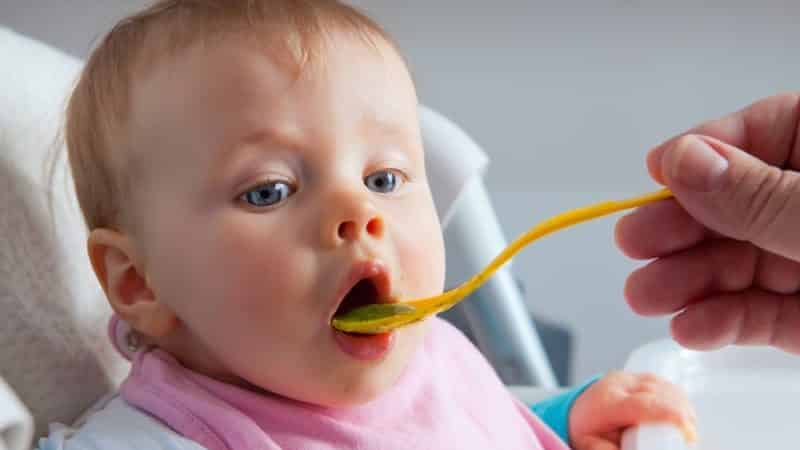Is it possible for a young mother to eat Chinese cabbage while breastfeeding?
Peking cabbage has long ceased to be an outlandish product and has firmly entered the diet of many along with white cabbage. However, the question of the possibility of a woman consuming this vegetable during breastfeeding still remains open.
Is it possible to eat Chinese cabbage during breastfeeding?
The menu for a nursing mother has always been the subject of controversy both among doctors and among ordinary people. And cabbage, for all its usefulness, was prohibited during the period of breastfeeding. However, this fact applies, rather, to white cabbage. Being a source of coarse fiber, it provokes increased gas formation and colic in the baby.
Compound
Chinese cabbage practically does not contain coarse dietary fiber. It contains a huge amount of vitamins, minerals and trace elements.

100 g of Beijing contains:
- fiber – 1.2 g;
- lutein + zeaxanthin – 48 mcg;
- lysine – 0.071 g;
- alpha and beta carotene – 1 mcg and 0.19 mg, respectively;
- antioxidants;
- omega-3 fatty acids – 0.1 g;
- potassium – 238 mg;
- calcium – 77 mg;
- magnesium – 13 mg;
- betaine – 0.3 mg;
- iron – 0.31 mg;
- selenium – 0.6 mcg;
- zinc – 0.23 mg;
- phosphorus – 29 mg.
Vitamins per 100 g of product:
- A – 16 mcg;
- B4 (choline) – 7.6 mg;
- B6 (pyridoxine) – 0.232 mg;
- B9 (folate) – 79 mcg;
- C (ascorbic acid) – 27 mg;
- E (alpha tocopherol) – 0.12 mg;
- K (phylloquinone) – 42 mcg;
- RR – 0.4 mg.
Properties
Thanks to its rich composition, Chinese cabbage has a number of useful properties:
- Strengthens the immune system, increases the body's resistance to viruses and infections.
- It has a beneficial effect on the nervous system, relieves headaches, normalizes sleep, and helps cope with depression.
- Accelerates metabolism, promotes complete elimination of fluid, improves kidney function.
- Replenishes iron deficiency in the body, helps overcome fatigue.
- Normalizes the functioning of the gastrointestinal tract, liver, effectively cleanses the intestines, preventing constipation and subsequent intoxication of the body.
Due to the peculiarities of its structure and growth, Chinese cabbage is practically not attacked by pests. The vegetable is not treated with chemicals, so harmful substances do not pass into breast milk.
Contraindications
Despite the obvious benefits, there are some contraindications to eating vegetables:
- Tendency to bleed.
- Gastritis, colitis, duodenitis.
- Increased acidity level.
- Problems with the pancreas.
Benefits and harms
Chinese cabbage, rich in nutrients, is available on shelves all year round. In winter and spring, when the body desperately needs vitamins, Pekinka is one of the few products that does not change its composition during storage.
The obvious benefits for nursing mothers are:
- Help with weight loss. This is a low-calorie product, rich in fiber. The vegetable speeds up metabolism.
- Fighting postpartum depression.
- Ability to resist colds and viral diseases.
- Improving the condition of skin and hair. Thanks to the normalization of digestion and the intake of a large amount of vitamins and minerals into the body, the appearance of a nursing woman changes for the better.
The baby, along with the milk of the mother who consumes Chinese cabbage, also receives nutritious nutrition with a lot of useful “bonuses”:
- Resistance to seasonal diseases.
- The necessary supply of vitamins and minerals.
- Good mood and great sleep.
There is practically no harm from eating Chinese cabbage. The main thing is not to forget that a sense of proportion is important in everything, and not to overuse permitted products.
Rules for use during lactation
This type of cabbage practically does not cause food allergies. But even such a seemingly harmless product must be used with caution. Each body is unique, so it is important to monitor your baby’s reaction.

How and when to introduce it into the diet
Once the child reaches the age of 3 months, Peking can be gradually included in your menu. You need to start with boiled, stewed dishes, soups.
After eating cabbage for the first time, carefully monitor your baby’s reaction for 48 hours. Restless behavior, changes in stool, rash are reasons to exclude vegetables from the diet. You can try introducing the product again no earlier than after 2-3 months.
If the baby tolerates the innovation well, the portions can be gradually increased, observing a 2-day interval and monitoring the child’s reaction.

What time of day and how much is there?
It is recommended to consume any new product in the first half of the day, preferably during breakfast. This makes it possible to observe the baby’s reaction during the day and not “sleep through” negative manifestations. You need to start with 1-2 tsp. product, gradually increasing portions as the child gets used to it.
What to combine with
Beijing goes perfectly with a wide range of foods:
- Stewed cabbage with carrots is an excellent source of vitamins.
- An ordinary soup with the addition of Beijing will acquire a unique taste and aroma.
- The vegetable also goes well with meat dishes.
But among the unsuccessful combinations are cottage cheese and dairy products. It is guaranteed to cause indigestion and stomach upset. It is also undesirable to season Beijing dishes with mayonnaise, garlic, a lot of herbs, spices and salt.
This is interesting:
Is it possible to give Chinese cabbage to a child?
A breastfed baby receives all the necessary nutrients from mother's milk. You should not introduce Chinese cabbage into the diet of a child under one year old. It is not recommended to give the vegetable raw to a child under 1.5 years of age.
How to choose good Chinese cabbage

When purchasing Chinese cabbage, take into account the following nuances:
- The color should be light green. The darker the shade, the more harmful chemicals the vegetable contains.
- The leaves are dense, smooth and elastic. Dry foliage is a reason to refuse the purchase.
- Condensation should not accumulate on the packaging.
- Light pleasant smell of greenery, without rancidity or foreign inclusions.
Recipes with Chinese cabbage for nursing mothers
It is recommended to try this vegetable on warm water for the first time in a heat-treated form.
Interesting! Chinese cabbage practically does not lose its beneficial properties and taste when heat treated.
Stuffed cabbage rolls

For your favorite dish, the usual white cabbage can be replaced with Chinese cabbage.
Ingredients:
- Chinese cabbage – 1 large head;
- rice - 1 tbsp.;
- minced meat – 250 g;
- onions, carrots - 1 pc.;
- tomato paste – 2-3 tbsp. l.;
- vegetable oil.
Preparation:
- Separate the cabbage leaves and place them in boiling water to soften them.
- Saute the onions and carrots, boil the rice until tender. Mix all the ingredients into the minced meat, add salt to taste.
- Form cabbage rolls, place in a saucepan, add salt again, add tomato paste (can be replaced with peeled tomatoes).
- Pour in water so that it covers the cabbage rolls by about 1 cm. Simmer until done.
Vegetable soup

Preparing a flavorful and healthy dish will not take much time.
Ingredients:
- Chinese cabbage – 200 g;
- potatoes – 3-4 pcs.;
- onion – 1 pc.;
- carrots – 1 pc.;
- chicken broth – 1.5 l;
- greens, salt, pepper - to taste.
Preparation:
- Cut the carrots and onions into cubes and sauté in a small amount of vegetable oil.
- Place chopped potatoes, sautéed onions and carrots into the boiling broth.
- Cut the Beijing into thin strips.
- When the potatoes are almost ready, add herbs, salt, pepper and Chinese cabbage. Bring to a boil, simmer for 3-5 minutes, cover and remove from heat.
Conclusion
Peking cabbage is allowed to be consumed while breastfeeding. By diversifying your menu with Beijing dishes, you will not only get in shape faster, but also replenish the supply of vitamins and minerals in your body. Vegetables should be introduced into the diet gradually, following the recommendations and observing the baby’s reaction. If you have any doubts, it is better to consult your doctor.